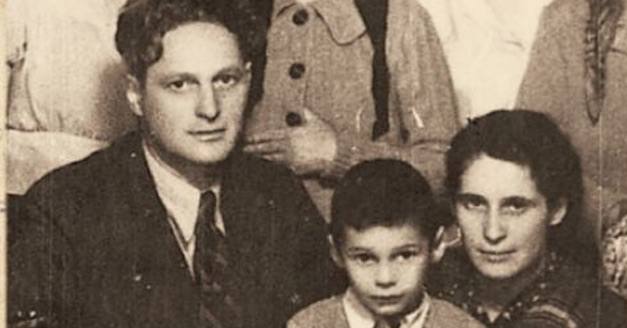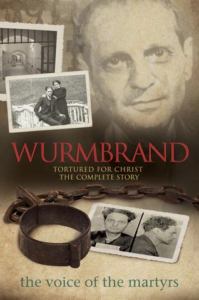New book shares gripping true-life story of tortured Christians

The plight of tortured Christians by Communists is nothing new. Just this week another Christian pastor and several church members were arrested by a police squad in China.
But few accounts of what that horrific torture looks like are as striking and detailed as those of Romanian Pastor Richard Wurmbrand. On February 29, 1948, Wurmbrand was arrested on his way to a church service. His ‘crimes’ were leading Christian worship and witnessing to his faith, both of which were illegal under the Communist regime. He was to spend 14 years in prison, undergoing torture and abuse. His wife Sabina was also imprisoned and brutally treated.
The following is an excerpt from an inspiring new biography published on June 26– the International Day in Support of Victims of Torture.
 ‘You’ve been playing with us,’ Colonel Dulgheru shouted, delivering a blinding punch to Richard’s cheek. ‘Can’t you see that you’re completely at my mercy and that your Saviour, or whatever you call him, isn’t going to open any prison doors?’
‘You’ve been playing with us,’ Colonel Dulgheru shouted, delivering a blinding punch to Richard’s cheek. ‘Can’t you see that you’re completely at my mercy and that your Saviour, or whatever you call him, isn’t going to open any prison doors?’
‘His name is Jesus Christ,’ Richard said, his face throbbing, ‘and if he wants to, he can release me.’
‘All right,’ Dulgheru said. ‘Tomorrow you will meet Comrade Brinzaru.’
Richard, like all the other prisoners, dreaded that name. Major Brinzaru had a reputation for being a refined, intelligent sadist with arms as hairy as a gorilla’s and a knack for extracting information.
Before he became an interrogator, he had worked for a popular politician whose son was arrested for leading a patriotic movement.
‘I used to hold you on my knee when you were a baby,’ Brinzaru had told the young lad. Then he killed him with his bare hands.
Richard knew the days of soft interrogations had come to an end. Brinzaru brought him to a room filled with a wide variety of torture instruments. ‘Is there anything here you particularly fancy?’ Brinzaru asked, gesturing toward a table filled with curved knives and pliers. ‘We like to be democratic here.’
Brinzaru forced Richard to stand on the tips of his toes with his arms touching the ceiling. When the blood abandoned his limbs, he collapsed, only to be beaten back into position. For several hours each day, Richard was forced to adopt obscene, crude, and ridiculous postures. If the goal was to steal his dignity, the guards succeeded as they laughed at each position.
The wall in front of Richard reminded him of a phrase in the Bible: ‘My beloved is like a gazelle or a young stag. Behold, there he stands behind our wall’ (Song of Solomon 2:9). As the guards racked his body, creating countless welts, he imagined Jesus standing on the other side of the wall, comforting and suffering with him. If Christ could stretch out his arms on the cross, Richard could raise his own as well. Moses, the leader of the Israelites, also came to mind. As long as Moses’s hands were raised, the Jews had triumphed in their war against the Amalekites (see Exodus 17:11).
Often blindfolded, Richard couldn’t construct a mental map of the prison. But one room he knew well was the manège, the training ring, as the prisoners called it. Dreadfully small, the entire cell could be circumnavigated in twelve paces. After four steps, there was a wall. Then two more steps and another wall. Brinzaru forced Richard to walk in circles around its periphery for hours.
‘Walk!’ he demanded. ‘Keep going around!’
Richard obeyed, bruising himself as he bounced off the walls. He felt light-headed, and his eyes stung from sweat. After several hours, the room began to blur. Richard closed his eyes and slammed into the walls while trying to retain enough mental clarity to pray for the guards who were harassing him.
‘Faster!’ they told him.
To make sure Richard didn’t die prematurely, a doctor always presided over the torture sessions. At times death seemed only seconds away. Richard was suffocated until unconscious, and his body was flogged until his lungs lacked the strength to inhale air.
One of the guards cracked a wooden club against Richard’s elbow, sending radiating pain up his arm. ‘Get up! Get moving!’
The next day Richard was instructed to squat on the floor with his arms behind his back. The guard shoved a metal bar behind his elbows, lifted his body into the air, and lashed his feet, thighs, and spine with a nylon whip. The blacked-out goggles on his head prevented Richard from bracing for the impact of the lashes, causing the pain of each strike to double. After only a few beatings, Richard lost consciousness. But the guards brought him back to reality by hurling a bucket of ice-cold water in his face.
The following week Brinzaru came into Richard’s cell and held a knife to his throat. The blade penetrated his skin several times and lacerated his chest. Richard awoke to discover his whole torso covered in blood.
When stabbings failed to inflict enough pain, Brinzaru inserted a funnel into Richard’s mouth and poured water down his throat until his stomach almost ruptured. Then he ordered the guards to kick Richard until he vomited.
One day Richard was blindfolded, and two wolves rushed into his cell. He was told the beasts were trained to attack prisoners if they moved, and Richard sat motionless, feeling their hot breath only inches from his face.
As the months passed, the intensity of the torture increased. Guards pressed red-hot irons into Richard’s ribs. His skin sizzled under the heat, and within a few seconds he fainted. Then the guards revived him with the searing pain of repeated burnings. Being branded with irons became an inferno as close to hell as Richard had ever experienced, and he pitied the guards who would spend eternity in similar torment.
To make sure Richard didn’t die prematurely, a doctor always presided over the torture sessions. At times death seemed only seconds away. Richard was suffocated until unconscious, and his body was flogged until his lungs lacked the strength to inhale air.
Jesus was whipped also, Richard remembered. What a privilege to share in the very sufferings Christ endured. The cries and moans of nearby prisoners rang throughout the night, especially when their limbs were torn from their joints on a rack, a device that stretched the body until a prisoner’s bones popped out of the sockets. The mere mention of the rack instilled fear and extracted many confessions.
‘Where are the names of those you passed the secrets on to?’ Brinzaru demanded.
Richard wrote down numerous names and addresses, but he never betrayed his friends. The names belonged instead to those who had already died or escaped to the West.
Before his arrest, Richard never dreaded mockery or humiliation. But all that changed when two guards spat and urinated in his mouth while others watched and laughed. Under torture, Richard was forced to confess to being a homosexual, an adulterer, a thief, a spy, and a traitor. At night he retired to his cell, weeping from the emotional trauma of the day and praying for strength to endure the next day’s torment.
‘Why don’t you give in?’ Brinzaru asked. ‘It’s all so futile. You’re only flesh, and you’ll break in the end.’
The Communists believed a man would do anything to avoid being put to death. A prisoner, they believed, would confess everything for his freedom. Richard sat alone in solitary confinement,dreading the torture the next day would bring, but he believed that life consisted of more than flesh, blood, and bone. His captors could brand, flog, mock, and humiliate him. But not even all the Communists in Europe combined – Brinzaru included – could rob him of his soul. His soul was held in hands too powerful to pry apart.
Wurmbrand: Tortured for Christ – The Complete Story is published by David C Cook







